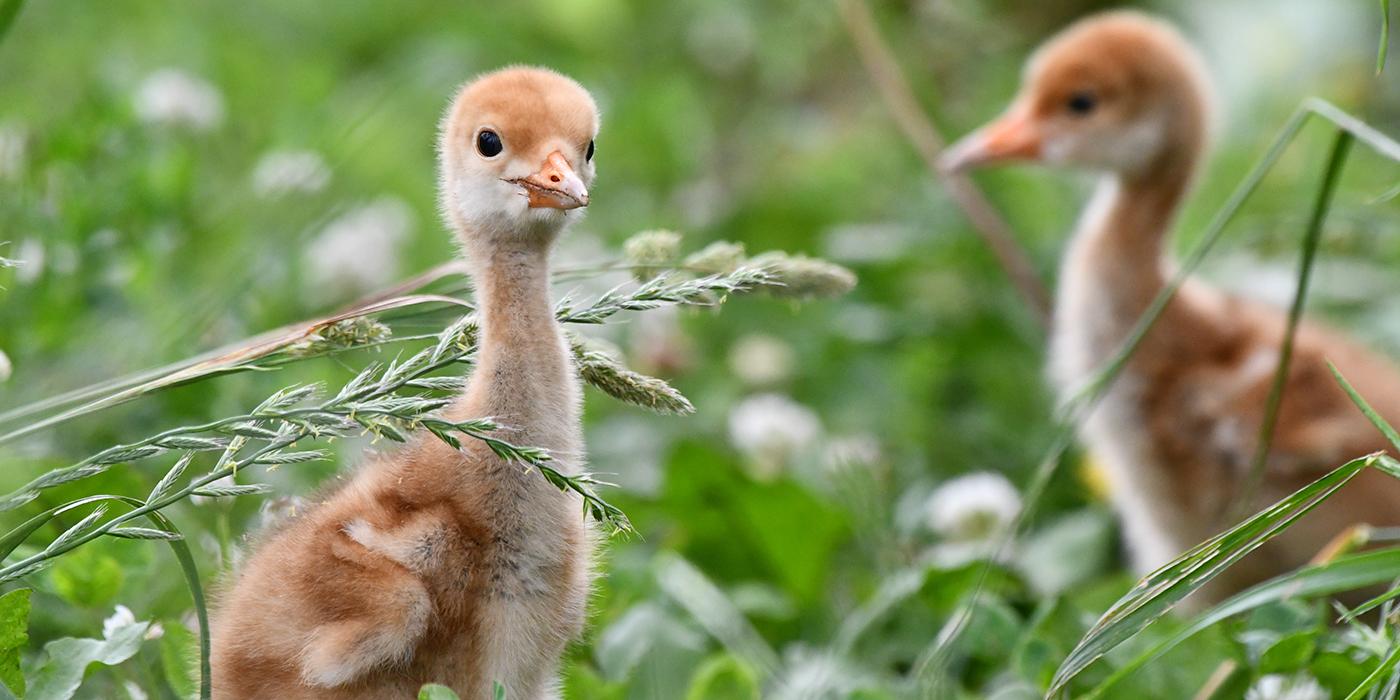Featured Creature: Whooping Crane
Whooping cranes are graceful, expressive and curious creatures. With the help of conservation science, these endangered treasures of North America are flying back from the brink of extinction. Get acquainted with these big, beautiful birds in this Q+A with Smithsonian Conservation Biology Institute (SCBI) keeper Chris Crowe.
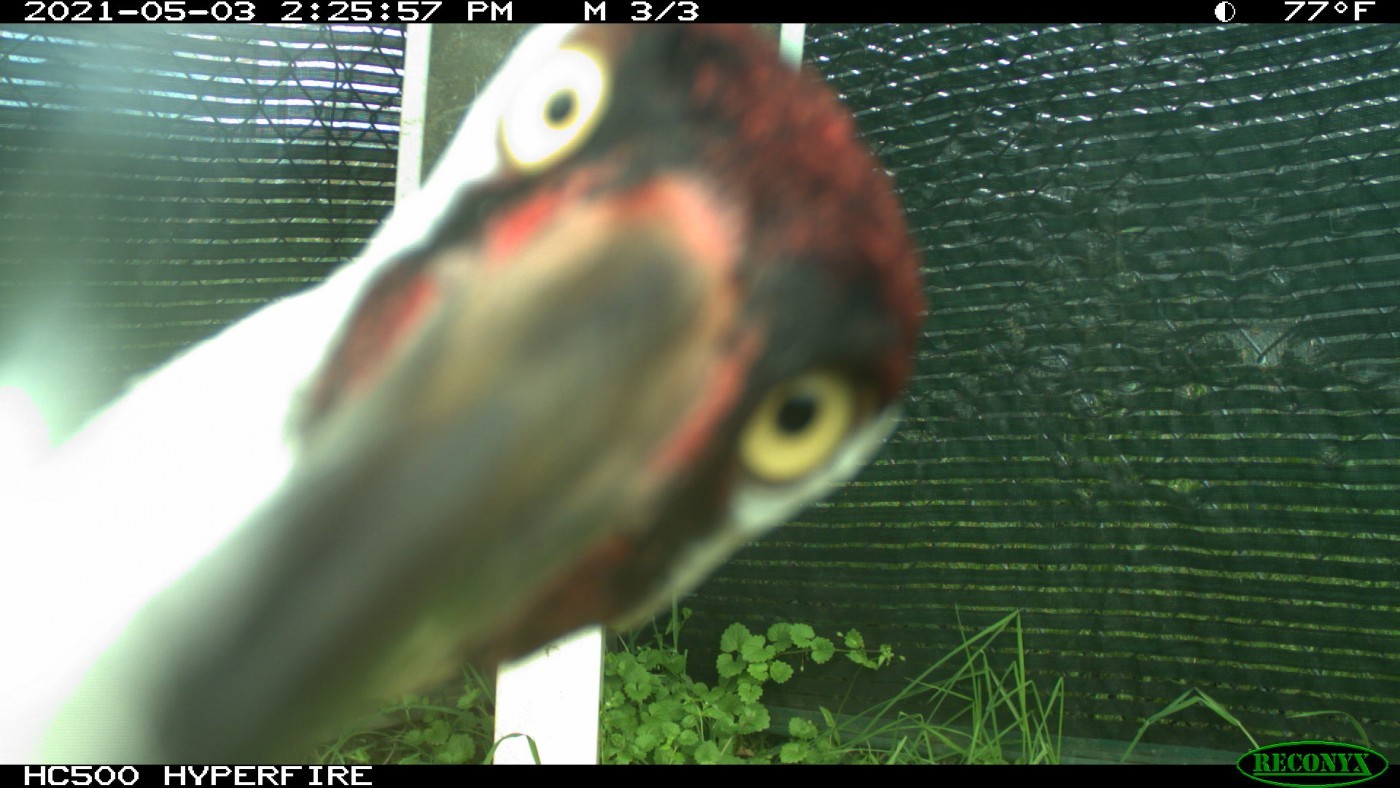
What are whooping cranes’ personalities like?
Whooping cranes‘ wide variety of displays and vocalizations clearly express exactly how they feel. They are joyful and dance enthusiastically. As the same time, some are very territorial and will respond fearlessly (and aggressively) to any perceived threat. Whooping cranes are smart and always alert to everything—including the trail cameras that we set up to monitor them!
Have you ever heard a whooping crane trumpet?
Yes! Vocal communication is essential to these birds, who call to one another to indicate breeding, danger, flight or to strengthen bonds with their mates. The secret to this crane’s amazing volume and pitch lies in its trachea, which coils about 9 inches into its sternum. Altogether, a whooping crane’s trachea measures 5 feet in length, which is as long as this bird is tall!
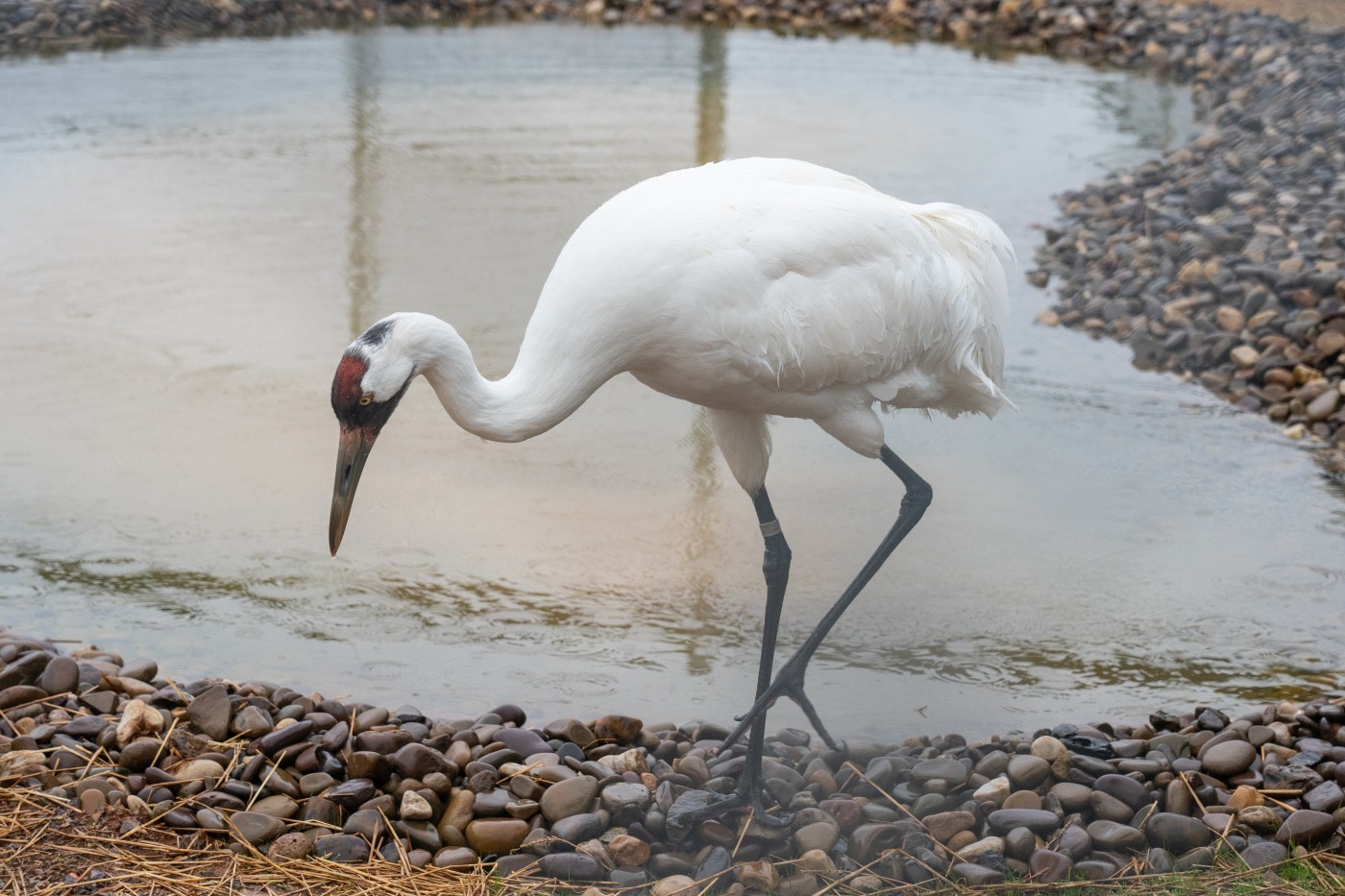
What’s on the menu?
In their native habitat, whooping cranes may eat small rodents, amphibians, reptiles, crustaceans, fish and insects. At the Smithsonian Conservation Biology Institute, there are nine beaks to feed—five males and four females. Another pair, a male and female, live at the Smithsonian’s National Zoo. They feast on fish (smelt), mice, mealworms and crane pellets, which are fortified with vitamins and minerals. Our team has also observed the cranes hunt meadow voles, tadpoles and cicadas.
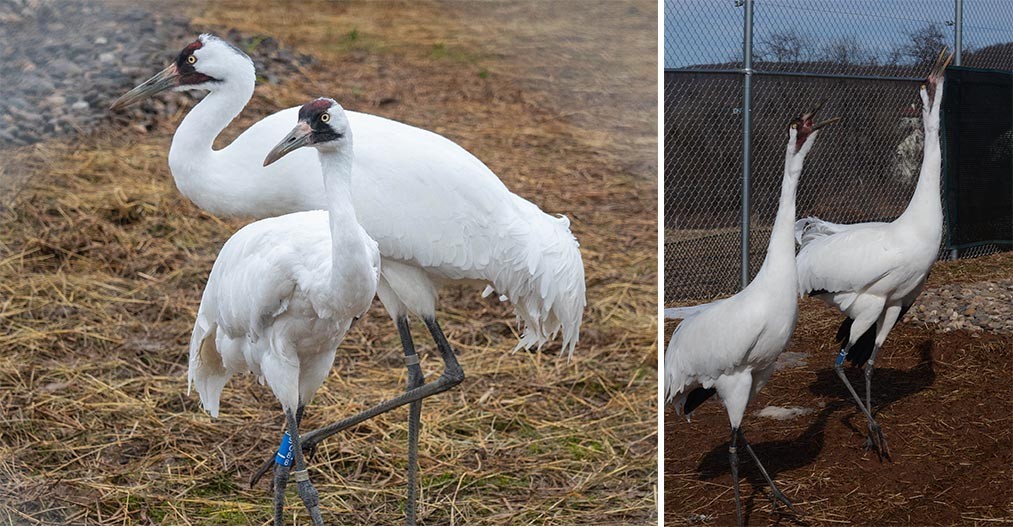
How do whooping cranes date, mate and parent?
Whooping cranes live in monogamous mated pairs and have elaborate courtship rituals that reinforce their pair bonds—including unison calls and dancing! Breeding occurs in prairie wetlands alongside shallow lakes, ponds and marshes that offer an abundance of vegetation, food and protection from potential predators.
These birds breed in the spring, and eggs hatch approximately 30 to 35 days after they are laid. Both parents take turns incubating eggs and caring for their chicks. Chicks fledge when they are between 80 and 100 days old, but they will stay near their parents’ territories for up to nine months.
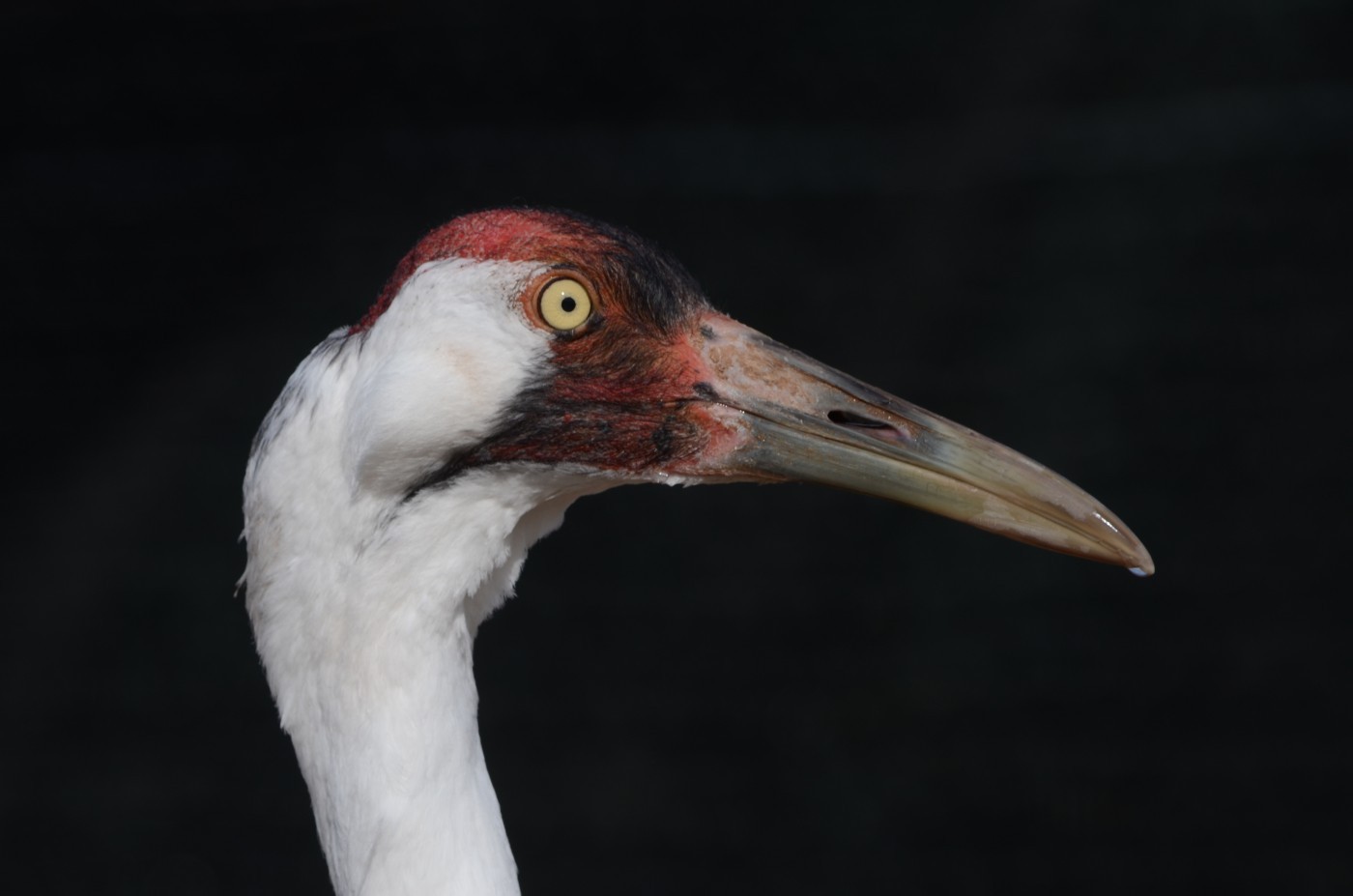
How is SCBI saving this species?
In 2018, the Smithsonian Conservation Biology Institute opened a new whooping crane breeding facility. Although SCBI’s cranes are primarily senior and have some physical disabilities, our team remains hopeful that they will successfully breed and produce chicks. The species still needs help recovering, and any chicks that hatch at SCBI will be candidates for reintroduction to the wild! It will be especially rewarding to grow our crane program and positively impact the wild population.
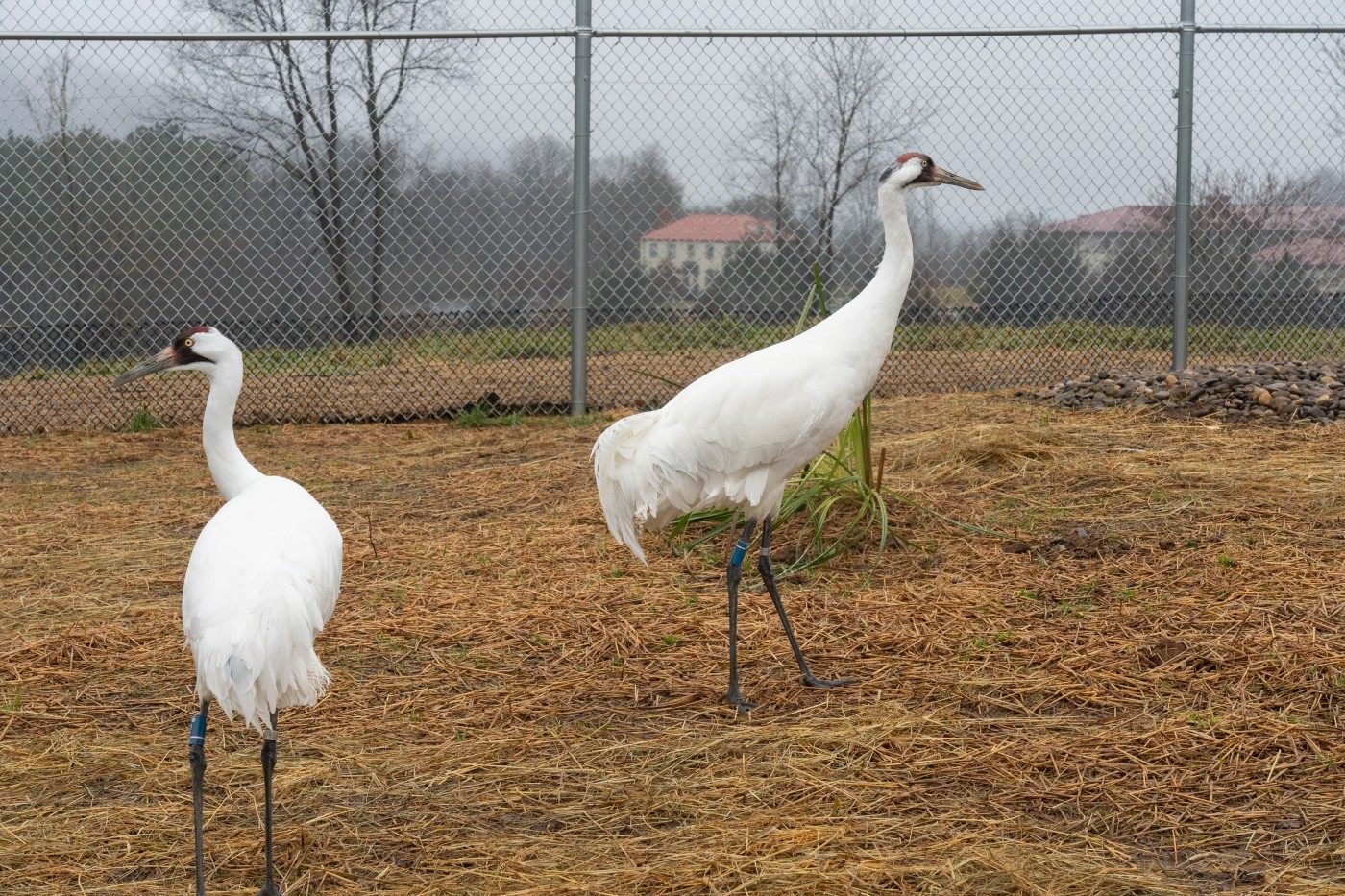
What can I do to help whooping cranes?
Habitat destruction, hunting, climate change and natural disasters as well as oil spills have all contributed to the decline of whooping cranes. By 1941 it was estimated only 21 whooping cranes remained in the wild. There are now approximately 800 whooping cranes living in the wild and under human care. If you want to help wild whooping cranes and their habitats, support conservation organizations that are working to save this amazing endangered species!
This story was featured in the June 2021 issue of National Zoo News. Want to learn more about whooping cranes? Fly into the captivating world of these and other feathered friends in BIRDS: A Smithsonian Coloring Book! With fun facts guided by animal care experts and scientists from the Smithsonian’s National Zoo and Conservation Biology Institute, time spent coloring is also time spent learning.
Related Species:



